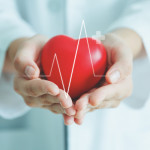Insomnia is associated with a higher risk of a certain type of heart attack, called a type 2 myocardial infarction (T2MI) among people with HIV.
Type 1 myocardial infarctions (T1MIs) result from a rupture of plaque build-up on the walls of the arteries leading to the heart. T2MIs are driven by an increase in oxygen demand in the body in the face of a decreased supply of oxygen; this can occur during sepsis or cocaine use, for example.
Bridget M. Whitney, PhD, MPH, of the University of Washington, presented findings at the 2020 Conference on Retroviruses and Opportunistic Infections in Boston from a study of insomnia’s association with T1MI and T2MI among people with HIV.
Previous research has indicated that people with HIV experience a disproportionately high burden of sleep disturbances, including insomnia, compared with the general public. Additionally, insomnia is associated with an increased risk of cardiovascular disease (CVD), which in turn may drive up heart attacks among people with HIV.
Even when they are on antiretroviral treatment, people with HIV have an estimated doubled risk of CVD compared with those who do not have the virus.
Whitney and her colleagues drew their research data from the multisite Centers for AIDS Research Network of Integrated Clinical Systems cohort. A total of 11,189 people with HIV provided information about their experiences with insomnia upon entering the cohort, with the condition defined as having difficulty falling or staying asleep with symptoms that are bothersome.
Fifty-seven percent of the cohort members reported some difficulty falling or staying asleep, and 48% reported that that their insomnia symptoms were bothersome. These findings were consistent with previously published papers indicating that 50% to 70% of people with HIV have insomnia.
During an average of 4.3 years of follow-up, the cohort members experienced 241 heart attacks. A total of 10,948 (98%) of the cohort members did not experience a heart attack, while 141 people (1%) experienced a T1MI and 100 (1%) experienced a T2MI.
Among the no-heart-attack, T1MI and T2MI groups, the average age was a respective 43, 51 and 49 years old; 15%, 7% and 22% were women; the median CD4 count was 523, 499 and 387; 21%, 22% and 33% had a viral load of at least 400; and 48%, 47% and 59% had insomnia.
After adjusting the data to account for differences between the cohort members in age, sex and race, the study authors found no association between insomnia and the risk of T1MI. When they further adjusted the data to account for clinical factors, including differences in CD4 count, viral suppression, smoking, stimulant use, treatment for high blood pressure, treatment for irregular blood lipids such as cholesterol and poor kidney function, the investigators still found no link between insomnia and T1MI risk.
As for T2MI risk, the researchers found that after they adjusted for age, sex and race, insomnia was associated with a 67% increased risk of this type of heart attack. This finding was statistically significant, meaning it is unlikely to have been driven by chance. That said, when the study authors further adjusted the data to account for the set of clinical criteria, insomnia was associated with a 49% increased risk of T2MI that was not statistically significant, meaning it may have been driven by chance.
The main identified causes of T2MIs included sepsis (35%), a high blood pressure urgency or emergency (10%), cocaine or other illicit drug use (8%), medical procedures (7%), low blood pressure (6%) and low oxygen in the blood (6%).
The study authors concluded that their findings highlight the importance of distinguishing between types of heart attack, in particular among people with HIV.







Comments
Comments